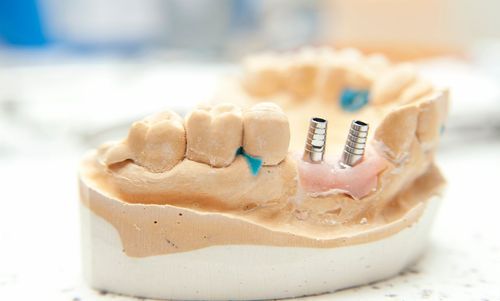We address bone loss in implants with bone grafts and CT scans for patients with low bone density.
For dental implant application, the presence of bone with sufficient thickness, length, and quality is required. And if one of these values is insufficient, the likelihood of experiencing problems related to implant application increases.

However, with today's advanced techniques, methods, and materials, it is possible to regain many lost tissues partially or completely. Thus, it is possible to place implants in areas with bone deficiency.
When bone resorption occurs, the remaining bone amount generally needs to be evaluated with tomography. According to this evaluation, the dental implant operation is planned by determining bone thickness, density, and relationship with adjacent teeth and regions.
So, having bone deficiency is not an obstacle for dental implants. However, there are extra operations that need to be performed when bone resorption exists above a certain level. These operations are generally called bone graft operations.
During bone graft operations, various products such as different bone powders (bone graft), bone covers (membrane), bone fixation pins, membrane fixation pins, PRF, Enamel Matrix Proteins (Emdogain, etc.) are used. These operations can be performed during the implant operation or may need to be performed as a separate procedure. Because some bone resorption cases do not allow implant placement during bone graft operations. In these cases, graft operations are performed first, and if bone formation is sufficient after the necessary waiting period, the implant can be placed.
Does bone always form with a bone graft?
Bone graft operations are performed on people who do not have sufficient bone tissue. And before these operations, the person's systemic condition, medications used, and causes of tooth loss are questioned, and planning is done after the bone condition is determined with Computed Tomography. These initial evaluations are important for determining the materials to be used and the process decision.
After the initial evaluations are completed and planning is done, bone powder (bone graft), bone cover (membrane), and other products are placed in the amounts and sizes determined during planning—usually with a one-session operation—and the healing period begins.
It is important that the healing period passes without problems and that no infection or abscess occurs. Because the materials used create a kind of closed environment, and as long as this closed environment maintains its integrity, the probability of new bone formation is very high.


